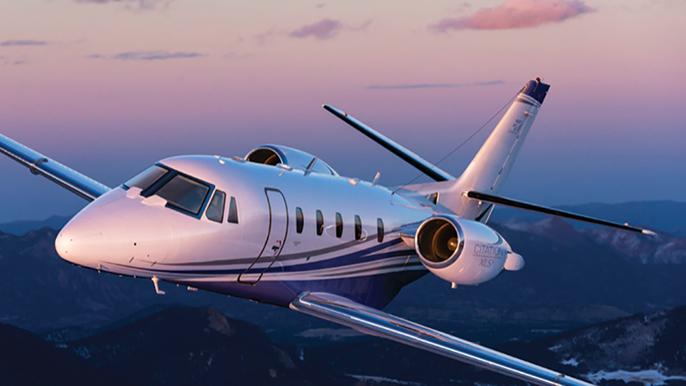
The FAA Reauthorization Act of 2018 contained a section titled “Report on Illegal Charter Flights,” which contained several requirements intended to help identify and combat such activities. The agency has since been revising inspector guidance and has even sent a letter to every pilot on record regarding the new emphasis on combating illegal charters.
But where is the line between legitimate FAR Part 91 business aviation operations and illicit ones?
The straightforward options for sharing aircraft under Part 91 are time sharing, joint ownership and interchange, which are defined in Part 91.501. The less-than-straightforward options are dry leasing your aircraft or “sharing the expenses” under Part 61.113.
Part 91.501 applies to large airplanes (over 12,500 lb. MGTOW) and turbojet-powered multiengine airplanes. However, there is an exemption for members of the NBAA who want to use the flexibility of Part 91.501 for a helicopter or small airplanes. The NBAA small-aircraft exemption, 7897K, has been around in various forms for decades. However, because of the FAA’s new focus on illegal charters, if a corporate operator wants to utilize the NBAA exemption, in addition to the numerous previous requirements (that already included contacting the nearest FSDO), the company must now go to http://www.regulations.gov and file a Notice of Joinder. No one may operate under the exemption after Sept. 27, 2020, without first filing such a notice.
The easiest way to share a business jet with another company or individual is a “time-sharing agreement” under Part 91.501. Such an agreement is a lease of the aircraft with crew, but the reimbursement is limited to 2xfuel plus the flight-specific expenses, which means crew expenses but not crew salary. Maintenance programs cannot be charged as a flight-specific charge. If the 2xfuel plus flight-specific expenses is covering the entire cost of the flight, you are probably doing the math wrong. Because a time-sharing agreement is a lease, you must also comply with the “Truth in Leasing” notification requirements of Part 91.23 as explained in Advisory Circular 91-37B.
Although time-sharing flights are conducted under Part 91, they are “commercial” for Federal Excise Tax (FET) purposes. So, after the current COVID-inspired tax holiday (which ends on Dec. 31), you must collect and remit the 7.5% FET plus segment fees on all time-sharing flights.
If the new flying partner is going to be a regular user of the aircraft, and you want to avoid losing money and paying FET, you may want to consider a joint ownership agreement. Under Part 91.501 (c)(3), such an agreement means “an arrangement whereby one of the registered joint owners of an airplane employs and furnishes the flight crew for that airplane and each of the registered joint owners pays a share of the charge specified in the agreement.”
“Registered” is the key to joint ownership. Sharing ownership of an LLC that in turn owns an aircraft is not registered joint ownership. Because of the simplicity of registered joint ownership from an FAA enforcement perspective (just look at the registration certificate), joint owners have great latitude in shaping the arrangement to meet their needs.
Part 91.501 also contains an interchange concept that is useful for some, but it comes with strings, and the FET. Interchange is an hour-for-hour swap of airplane and crew that is primarily useful for smoothing out the occasional maintenance problem by swapping time with another flight department. The swap is subject to Part 91.23 Truth in Leasing requirements, and after this year’s tax holiday, the arrangement is subject to the commercial FET even if no money actually changes hands.
Meanwhile, dry leasing is governed by Part 91, but it is not defined there. Rather, Part 110.2 defines “wet lease” as “any leasing arrangement whereby a person agrees to provide an entire aircraft and at least one crewmember.” The phrases “dry lease” and “wet lease” have nothing to do with fuel. If you lease your aircraft to another company and their pilots (not your pilots) fly the plane, then you have a dry lease and you can charge whatever the market will bear. However, to the extent that any pilots employed by the lessor end up flying for the lessee, you can expect immediate FAA scrutiny to determine if the lessee truly has operational control, and, next year, IRS scrutiny to assess the FET.
“Sharing expenses” is more of a myth than an option. Part 61.113(c) states that “A private pilot may not pay less than the pro rata share of the operating expenses of a flight with passengers, provided the expenses involve only fuel, oil, airport expenditures or rental fees.” Case law doctrine limits this even further, requiring that the pilot and passengers share a “common purpose” for the flight. Under this doctrine, if a pilot offers to fly passengers wherever they want to go, then the pilot cannot share the expenses of the flight.
If you do not like your Part 91 options, then explore your Part 135 options. Starting your own certificate may not be a timely solution, but there are always Part 135 operators who welcome business aircraft owned by others to their certificates. This is still the best option if the company wants its aircraft to earn income whenever it’s not in company use. Part 135 comes with FAA paperwork and oversight. But there is no unlimited option for charging for flights under Part 91. The upside to Part 135 is that the company aircraft can earn the going rate, flying for anyone, anytime.




